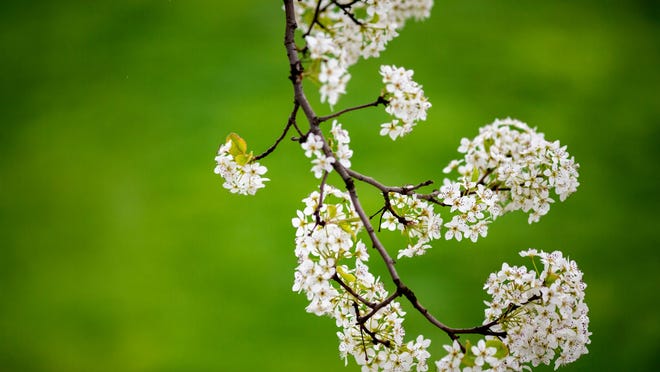A tiny bug may be key in fending off garlic mustard, the invasive plant that’s popping up everywhere from backyards to forests nationwide.
According to the USDA’s National Invasive Species Center, garlic mustard (or alliaria petiolata) is native to Europe and was first discovered in the United States in 1868.Today, its presence is prominent in states throughout the Northeast, Midwest and Northwest.
Although garlic mustard can be eaten, concerns arise from its powerful spread – which limits seed germination of surrounding species. Garlic mustard also thrives in shaded areas, so its impact on forests has been especially worrisome.
“They can actually prevent saplings from regenerating and other native species from growing in those areas,” said Michelle Beloskur, coordinator of the USDA’s Midwest Invasive Plant Network. “Anytime you have one species dominating, which invasives are really good at doing, you lose biodiversity … (and then) habitat for anything else up the food chain.”
Air-breathing fish to feral hogs:The invasive species you’re actually supposed to kill
Now there’s a new, unexpected weapon in the fight against the invasive species: garlic mustard aphids.
The tiny bug has recently been identified in the United States. Last summer, it was detected by staff at Holden Forests & Gardens in Ohio for the first time.
The twisted seed pods and wrinkled leaves of the plants give hope of a new solution. Although it has not been fully proven, evidence shows these aphids might serve as a new weapon against garlic mustard.
The sap-suckers are dark black in color, standing out well among the green leaves of garlic mustard.
“We’re interested in learning how widespread these aphids might be and learning more about them,” said Beloskur.
What’s everyone talking about?:Sign up for our trending newsletter for the latest news of the day
The University of Georgia’s web-based mapping system for documenting invasive species across North America, Eddmaps.org, allows users to report negative and positive sightings of garlic mustard aphids. Negative sightings occur when garlic mustard is present without aphids. If you see an aphid on the plant, report it as a positive sighting
According to guidance from The Nature Conservatory, the best way to get rid of garlic mustard on your own is by manually pulling. Try pulling the plants from the ground before they seed, and then throw them out in the trash. The process can take 2 to 5 years to complete, so “vigilance is key.”
Contributing: Wyatte Grantham-Philips, USA TODAY.


